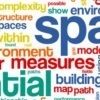Quantifying space, understanding minds: A visual summary approach
Keywords:
space syntax, spatial measures, environmental cognition, visual summariesAbstract
This paper presents an illustrated, validated taxonomy of research that compares spatial measures to human behavior. Spatial measures quantify the spatial characteristics of environments, such as the centrality of intersections in a street network or the accessibility of a room in a building from all the other rooms. While spatial measures have been of interest to spatial sciences, they are also of importance in the behavioral sciences for use in modeling human behavior. A high correlation between values for spatial measures and specific behaviors can provide insights into an environment's legibility, and contribute to a deeper understanding of human spatial cognition. Research in this area takes place in several domains, which makes a full understanding of existing literature difficult. To address this challenge, we adopt a visual summary approach. Literature is analyzed, and recurring topics are identified and validated with independent inter-rater agreement tasks in order to create a robust taxonomy for spatial measures and human behavior. The taxonomy is then illustrated with a visual representation that allows for at-a-glance visual access to the content of individual research papers in a corpus. A public web interface has been created that allows interested researchers to add to the database and create visual summaries for their research papers using our taxonomy.

Downloads
Published
Issue
Section
License
Copyright (c) 2017 Mark Simpson, Kai-Florian Richter, Jan Oliver Wallgrün, Alexander Klippel

This work is licensed under a Creative Commons Attribution 4.0 International License.
Articles in JOSIS are licensed under a Creative Commons Attribution 3.0 License.
